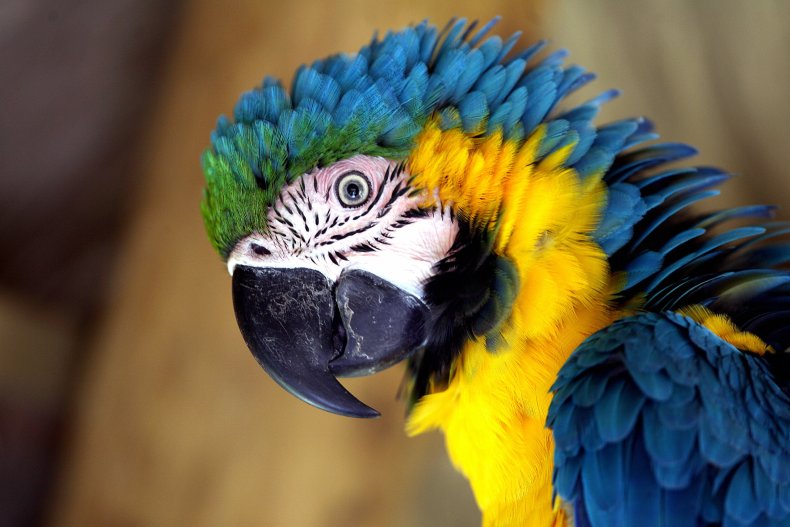On average, humans live for around 72 years, according to the United Nations. However, animals such as bowhead whales can live for more than 200 years.
Some animals species are expected to live for a century and, depending on their environments, many can live much longer.
Domestic cats usually live for up to 16 years, but in 2005, a domestic cat called Creme Puff became the oldest pet cat ever recorded when she died at the age of 38 years in 2005.
In the wild, animals face threats which can reduce their life spans, such as predators, hunting and habitat loss. Despite this, however, some animals can live for a surprisingly long time.
Macaw
Macaws are a group of 17 species within the parrot Psittacidae family and are easily recognisable with their bright feathers, long tails and large beaks. Originating from South America, Macaws thrive in rainforests and feed on nuts, seeds and fruits. The life expectancy of a Macaw depends on the species, but they can live for 50 years or more. In general, the larger the Macaw, the longer the life expectancy.

Getty/Yuri Cortez
African elephant
The African elephant is the largest living land animal, with a shoulder height of up to 11 feet and weighing an incredible six tonnes. Currently, an elephant living in the wild can live up to 70 years old, but they are vulnerable to poaching and habitat loss, leaving them at risk of being endangered.
Giulio Origlia/Getty Images
Galapagos Giant Tortoise
Galapagos Tortoises are the world’s largest tortoises, with some specimens exceeding five feet in length and reaching 550 pounds. Giant tortoises are the longest-lived of all vertebrates, averaging over 100 years – but they can live for a lot longer.
A giant tortoise called Tommy, who resides in Zimbabwe, is believed to be between 200 and 300 years old. This would make him the world’s oldest living land animal, but there are no records to prove his age so the Guinness Book of World Recordsawards that distinction to an 188-year-old tortoise in the Seychelles Islands named Jonathan.
RODRIGO BUENDIA/AFP/Getty Images
Japanese Koi Fish
Fish aren’t known for their long lifespans, but Japanese Koi Fish can live up to 40 years or longer if they are kept in the right conditions. Koi fish are descended from the common carp and modern Japanese koi are believed to date back to early 19th-century Japan where wild, colorful carp were caught and bred by rice farmers.
TORU YAMANAKA/AFP via Getty Images
Bowhead whale
Bowhead whales, found in the Arctic, are believed to be among the longest-lived animals on earth. According to the World Wildlife Fund, the analysis of eye tissue and stone harpoon tips found in their blubber, bowhead whales can live for more than 200 years.
Getty Images/Robert Harding World Imagery/Getty
Greenland shark
The Greenland shark has the longest known life span of all vertebrates, estimated to be between 300 and 500 years. Found in the North Atlantic and Arctic Oceans, the species can reach an astonishing 21 feet in length and mostly eats fish, but has been spotted hunting seals.
NOAA OKEANOS Explorer Program, 2013 Northeast U. S. Canyons Expedition/Flickr
Western Gorilla
In the wild, gorillas live for 30 or 40 years and in some cases can reach 50. There are two species of gorilla—the eastern and western. Each of these is divided into two subspecies: the eastern lowland gorilla and the mountain gorilla, and the western lowland gorilla and the cross river gorilla. According to WWF, humans share 98.3% of our DNA with gorillas, making them our closest relatives after chimpanzees and bonobos.
Oli Scarff/Getty
Brandt’s bats
Larger mammals tend to have longer life spans than smaller ones, but the Brandt bat is an exception to this rule. In 2005, biologists captured a Brandt’s bat in Siberia 41 years after it had first been caught.
In 2013, researchers at Harvard Medical School suggested that key changes to genes in a hormonal system known as the “growth hormone/IGF1 axis” may be responsible for the bats’ longer life span. These changes are not seen in other mammals, except as rare mutations.
iStock
American lobster
Some lobsters have extraordinarily long life spans. The American lobster can live to at least 100 years, in part thanks to its cool environment. The cold Atlantic waters help to slow down the American lobster’s metabolism, allowing it to age more slowly and live longer—if it manages to escape predators.
Darren McCollester/Getty Images
Albatross
Most species of albatross survive for 50 years or more and invest more time and effort into fewer offspring. The oldest recorded albatross was a Laysan albatross called Wisdom that was tagged in 1956 as an adult and hatched another chick in February 2021, making her at least 70 years old.
Getty Images
Cockatoo
Cockatoos—a type of bird known to form strong bonds with humans when kept as pets—have an average life span of 50 to 70 years, depending on the species. All cockatoo species occur in Australia and the islands around Oceania, including Malaysia and the Philippines.
Getty
Tuatara
Tuatara are reptiles endemic to New Zealand. Although they look like normal reptiles, they have an ancient lineage that goes back to the time of the dinosaurs. Tuataras mature slowly and don’t stop growing until they reach about 30 years old. It is thought they can live up to 100 years in the wild and like the American lobster, this may partly be down to their slower metabolism.
Marty Melville/AFP/Getty Images